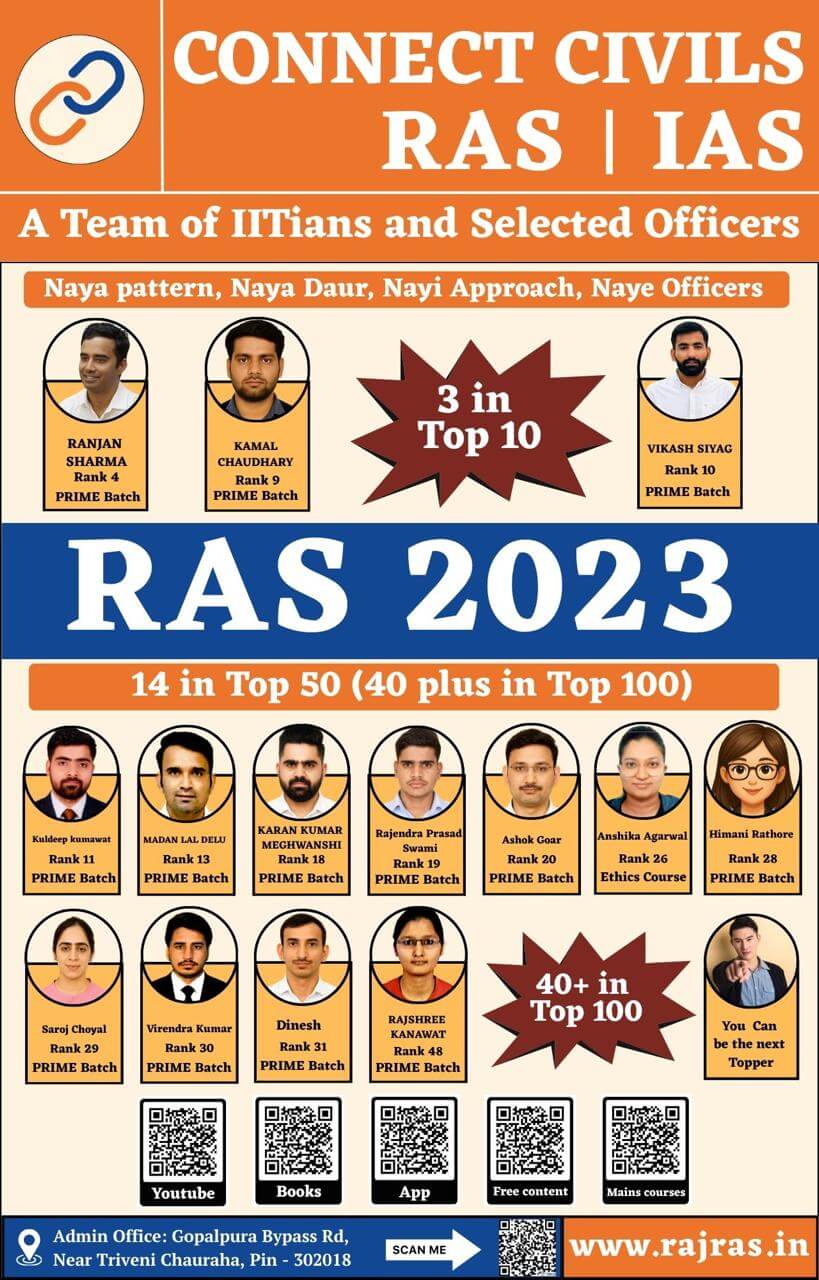The handicrafts of Rajasthan reflect the state’s rich cultural legacy and artistic excellence. In the context of Rajasthan History, these crafts have evolved over centuries, showcasing the skill of local artisans through textiles, pottery, jewelry, woodwork, and more. They not only represent traditional aesthetics but also the socio-economic fabric of the region.
Handicraft of Rajasthan
Rajasthan is called the hub of handicrafts. The history of its handicrafts is extremely ancient. Evidence of this is found in the third-century punch-marked coins (Nagar) and the 26 wooden pillars used in the Buddhist Chaitya of Virat Nagar.

Textile Art
Dyeing and Printing
- Mahidoj: Ancient craft of textile making.
- Major Types of Dyeing:
- Pomcha:
- A shawl associated with the lotus (Padma).
- Two types: Red-pink and red-yellow.
- Given to mothers of newborns; yellow for sons and pink for daughters.
- Lehariya and Chunari:
- Popular during Teej and other festivals.
- The “Bandhej” method of Chunari is famous as “Tie & Dye.”
- Pomcha:
Techniques of Dyeing and Printing:
Ajrakh Printing:
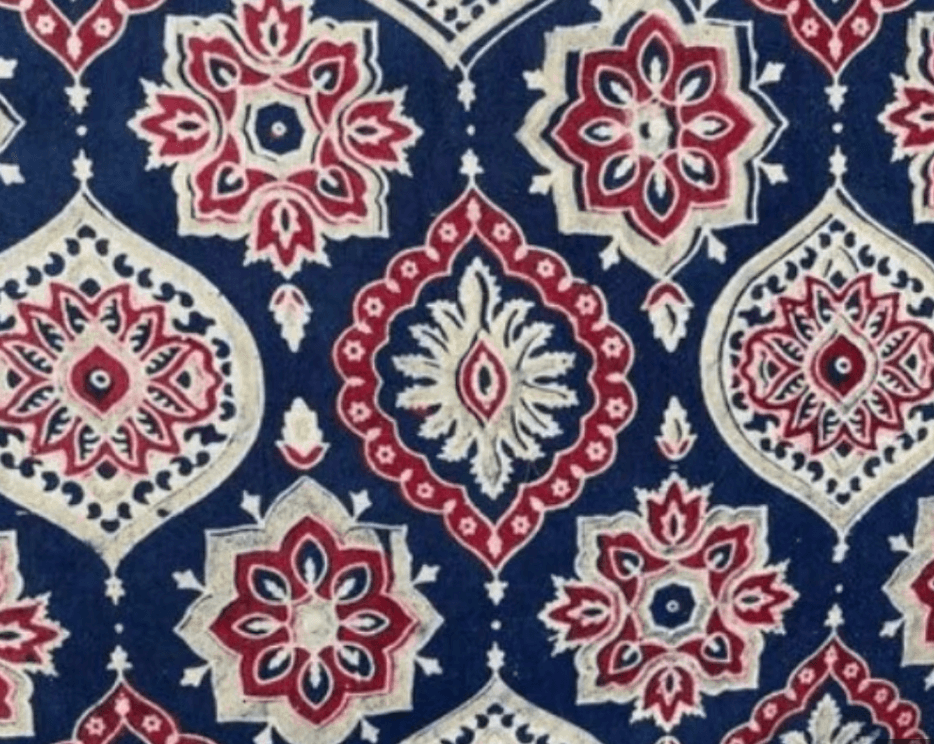
- Block printing of Barmer.
- Geometric ornamentation and printing on both sides.
- Colour : Blue and Red
Maleer Painting:
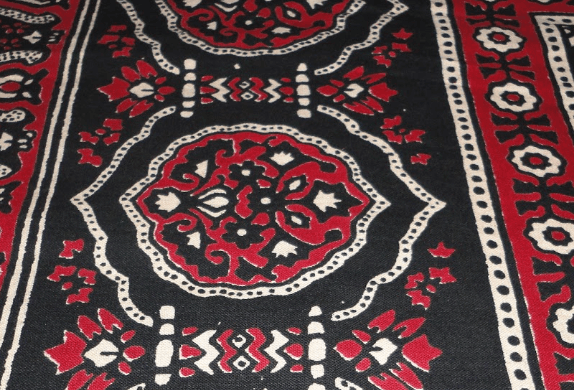
- Main centre – Barmer
- Colour : Blue and brown
Batik Art:
- The word ‘Batik’ is from Indonesia.
- Printing is done by creating designs with wax.
Dabu Printing:
- Akola Village in Chittorgarh is famous for Dabu Prints
- ‘Dabu’ means ‘to press’.
- Some parts of the fabric are covered with “Lai.”
- Main centres :
- Sawai madhopur – Wax is used as Dabu
- Baltora – Soil/Mud is used as Dabu
- Bagru & Sanganer – Bighan made from wheat is used as Dabu
Sanganeri Printing:
- Special use of black and red colors.
- Done on Lattha or Malmal clothes.
- Munna Lal Goyal made Sanganeri prints famous worldwide.
- Aminshah Nalla has been traditionally associated with this print
Bagru Printing:
- Printing of borders and motifs on cotton textiles.
Kota-Doria:
- Kota Doria is a fabric with a unique blend of cotton and silk in a square check pattern.
- The checked pattern is termed as ‘khat’.
- The silk provides the shine while the cotton provides strength to the fabric.
- Craft originated in Mysore and then shifted to Kaithun Village near Kota. Hence, the Saris came to be known as ‘Kota-Mansuria’.
Jewelry Industry
Meenakari
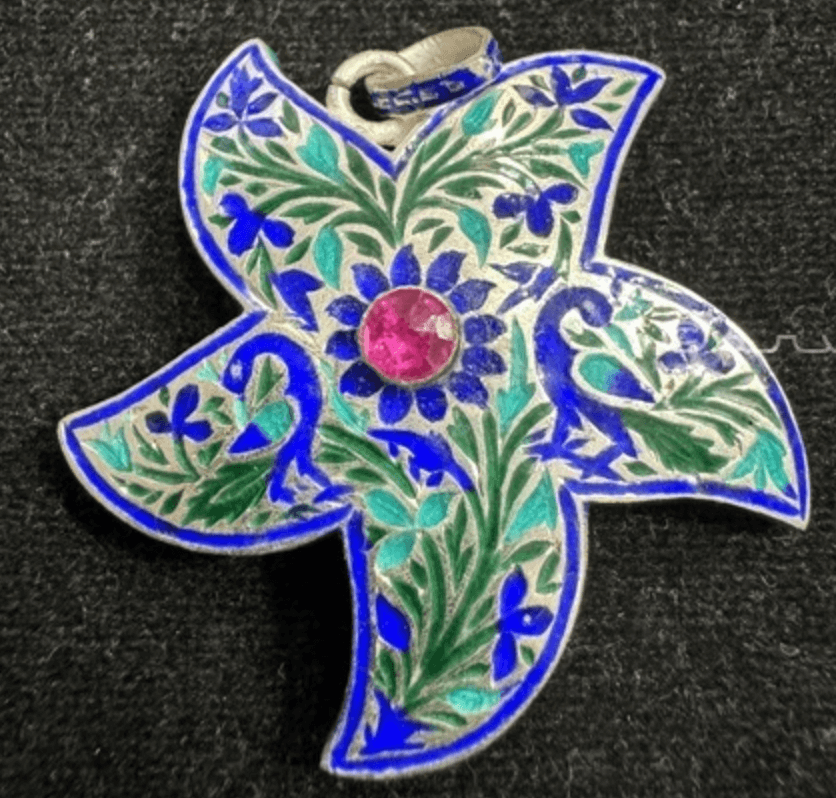
- Art of enamel work on gold and silver, or filling colors on gold and silver.
- Jaipur and Nathdwara are famous.
- In Kota’s “Raitwali” area, Meenakari is done on glass.
- This craft developed during the reign of Akbar in Rajasthan.
- Prominent products include ‘Champakali necklaces,’ ‘bangles,’ and ‘nose rings.’
- Kudrat Singh was honored with Padma Shri in 1988.
Thewa Art:
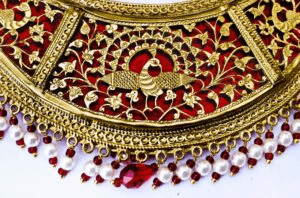
- Practiced by the Raj-Soni caste of Pratapgarh.
- Intricate gold craftsmanship on colored Belgian glass.
- Prominent products: Necklaces, pendants, boxes, and trays.
- This art depicts natural scenery, animals, birds, and religious stories.
Metalwork (Koftgari)
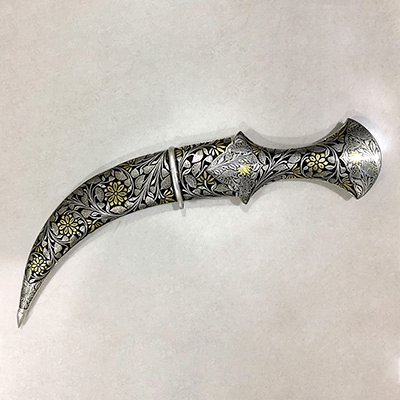
- Brought from Damascus to Punjab, and then spread to Gujarat and Rajasthan.
- Embedding thin gold and Silver wires on steel or Iron objects.
Stone Craft
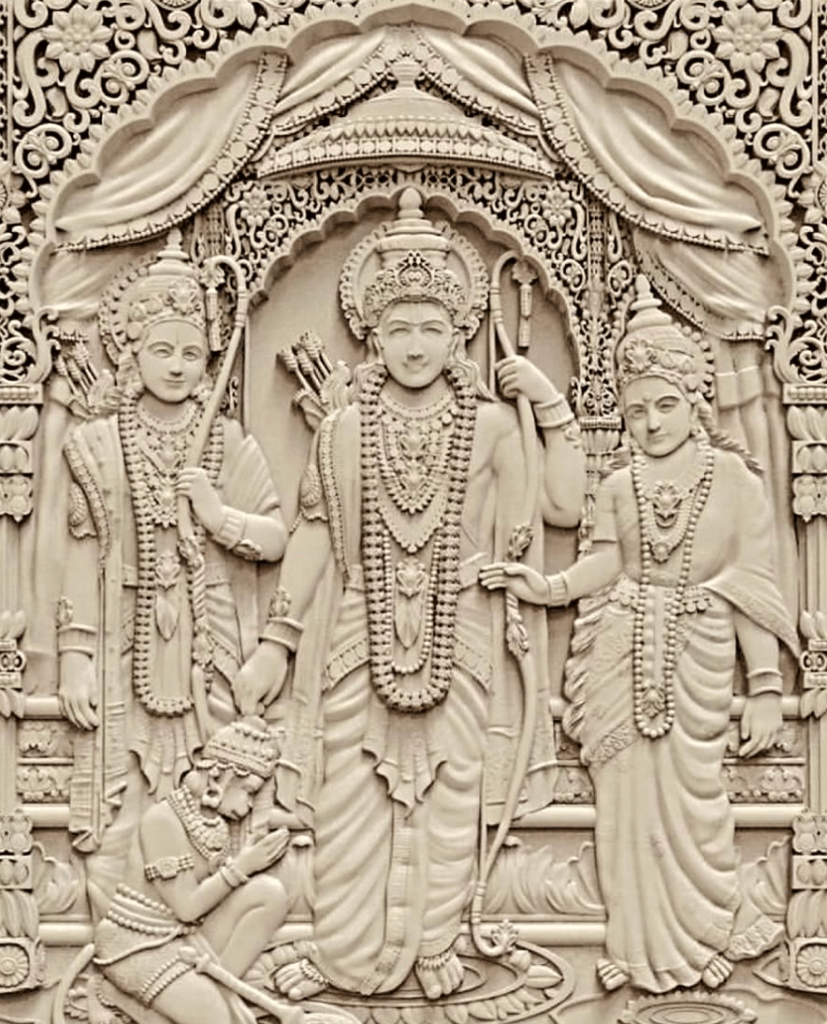
- Practiced in Rajasthan since the Mauryan period.
- District-wise stone specialties:
- Dungarpur: Green-black
- Makrana: White marble
- Jalore: Granite
- Banshi pahadpur – Pink stone
- Karauli-Dholpur – Red stone
- Inlay work on marble: Jaipur and Bhilwara are famous.
Terracotta Craft (Mrinal Shilp)
Blue Pottery:
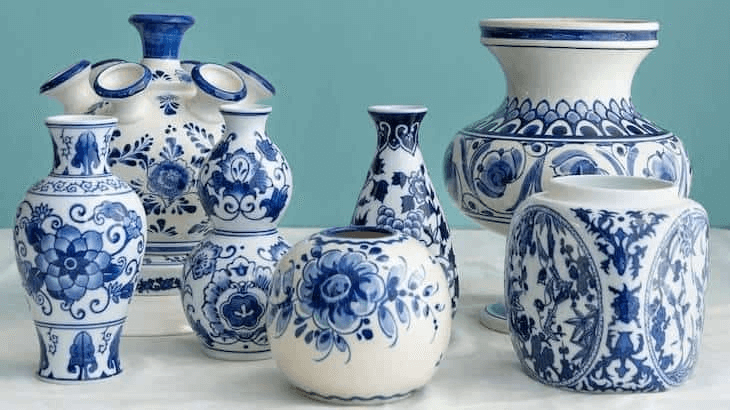
- Origin in Rajasthan during the reign of Raja Man Singh I.
- Locally called ‘Kam Cheeni’.
- Decoration done on porcelain using colored quartz powder is known as Blue Pottery.
- Revived after independence by Pandit Kripal Singh Shekhawat, who received Padma Shri in 1976 for Blue Pottery.
Ivory Works :
- Items include: Jewellery, Powder boxes, jewellery boxes,
- cufflinks, lamps, artistic decorations, idols of gods and goddess, brooches.
- Udaipur – most famous.
- Jodhpur – Black, green & Red strips bangles.
Molela (Terracotta Art):
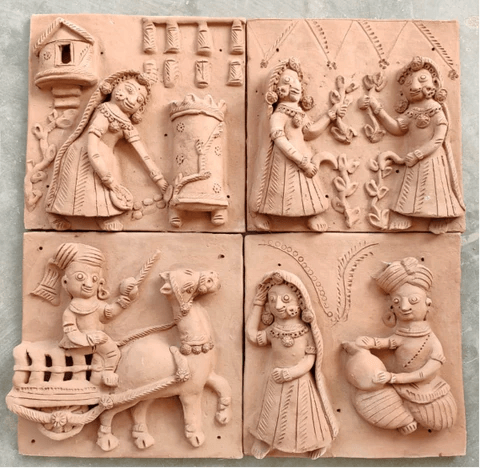
- The village of Molela in the Rajsamand district is famous.
- Black clay is used to make statues of local deities.
- Artisans mix 25% donkey dung with black clay sourced from Solanada pond. The mixture is flattened and figures are sculpted using hands and basic tools. After drying for a week, the pieces are fired at 800°C and painted with Geru color.
- Khemraj and Mohanlal Kumhar are renowned for this art.
Wood Craft
Kavad and Bevans:
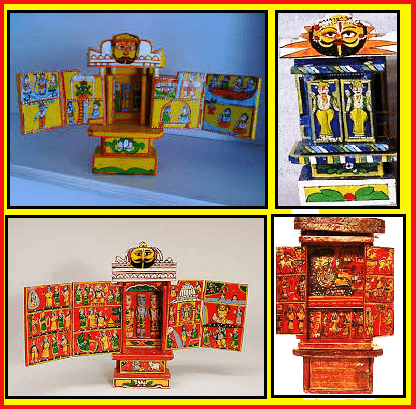
- Bewan Art is a traditional folk art of Rajasthan that involves crafting small, wooden miniature temples, which are often used in religious rituals and as decorative items.
- A specialty of Bassi village in the Chittorgarh district.
- A Kavad is a portable wooden temple with panels depicting visual stories of deities, local heroes, saints, and patrons. A wandering priest (Kavadiya Bhatt) narrates the art of Kavad. He visits the homes of his audience with his Kavad A Kavad is a portable wooden temple with panels depicting visual stories of deities, local heroes, saints, and patrons. A wandering priest (Kavadiya Bhatt) narrates the art of Kavad. He visits the homes of his audience with his Kavad and opens the panels to tell the story.
- As each panel unfolds, the curiosity of the audience increases. In a traditional Kavad, the final panel opens to reveal a beautiful and enchanting image of Lord Rama, his wife Sita, and his brother Lakshmana. These portable temples were primarily for those who could not visit a temple for worship.
- Famous artiste : Mangilal Mistri, Satyanarayan Suthar
Tribal Weapons:
- It is famous in Chanduji Ka Gada of Banswara district and Dungarpur.
Leather Industry (Usta Art)
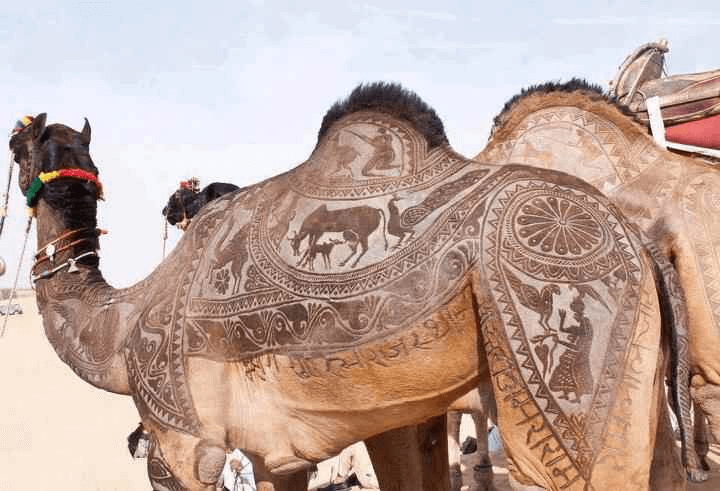
- Usta kala is a broader term that encompasses a combination of different art forms and techniques.
- In recent times, sunehri Munawwati Nakkashi work meaning gold embossing work on camel hide has gained prominence.
- Today, this has expanded to wood, mirrors, and marble.
- The art was recognised under GI tag in 2023.
Lac Work
- The primary work is making lac bangles.
- Jaipur is famous for Kutti work.
Promotion of Handicrafts in Rajasthan
- RAJSICO (Rajasthan Small Industries Corporation): Special initiatives for handicrafts.
- Industrial Policy of 1998.
- Handicraft Policy 2022: Target of creating 50,000 new jobs.
FAQ (Previous year questions)
The village of Molela in the Rajsamand district is famous for terracotta objects.
Black clay is used to make statues of local deities.
Method –
Artisans mix 25% donkey dung with black clay sourced from Solanada pond
The mixture is flattened and figures are sculpted using hands and basic tools.
After drying for a week, the pieces are fired at 800°C and painted with Geru color.
Khemraj and Mohanlal Kumhar are renowned for this art.
Handicraft of Rajasthan / Handicraft of Rajasthan/ Handicraft of Rajasthan/ Handicraft of Rajasthan

